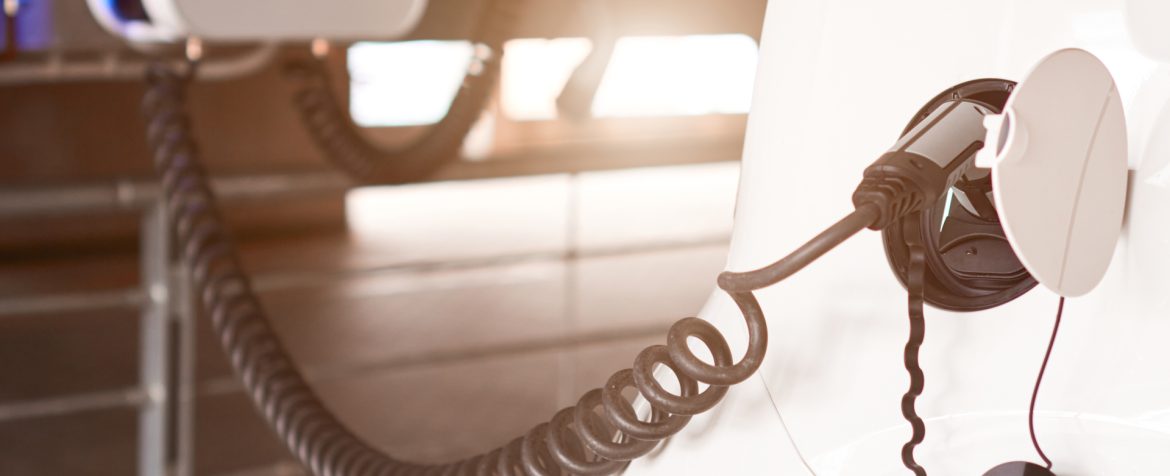Source: https://www.americancityandcounty.com/, Michael Keating, First published Feb 21, 2024
Yes, government fleet managers are going green and shifting to electric fleets. The Biden administration, for instance, has set some reduced-emission fleet targets. In its Federal Sustainability Plan, the White House calls for federal agencies to acquire 100 percent light-duty zero-emission vehicles (ZEVs) annually by 2027. The same plan calls for federal agencies to buy/lease 100 percent medium- and heavy-duty ZEVs each year by 2035.
For government fleet managers, electrifying a fleet is a long-term process, says Michael Spurr, public affairs manager at ADS-TEC Energy, a firm that develops and manufactures battery storage and fast-charging systems as well as energy management solutions. Its battery-based, fast-charging technology enables electric vehicles (EVs) to ultrafast charge even on low-powered grids. He is an active member of the Electrification Coalition.
“Due to several internal factors such as budget constraints and existing fleet decisions, transitioning an entire fleet to EVs won’t happen in a day,” Spurr explains. He adds that it is crucial for government fleet managers to do the following as they make plans: try to envision what an EV-only fleet would look like, figure out what will need to be in place to serve that EV-only fleet, and determine what specific local challenges your team may face as they establish a fleet made up of just EVs.
Spurr urges fleet managers to create an EV fleet strategy. He notes that the document should include milestone planning dates. It helps, Spurr adds, for the fleet manager to reach out and consult with the local utility early in the process.
Spurr says there’s no one-size-fits-all approach to shifting a government fleet to all-EVs. “As more EVs are transitioning to the fleet, the initial learnings from the first few vehicles will be extremely valuable.” He adds that it is important for the government team to consider several characteristics as the all-EV fleet takes shape:
- What types of vehicles (i.e., cars, trucks, delivery vans, special-purpose vehicles) will be needed for the fleet?
- What are the capabilities of the vehicle(s) selected? What is their range and charging time?
- How will the charging stations be set up and positioned to serve the EVs with the required energy and power?
The ADS-TEC Energy executive says a potential charging infrastructure solution could include a private-public-use split for the charging points. “That way, the infrastructure does not need to only be financed through internal use, especially when usage is low, but it could also provide charging opportunities to members of the community. Here, different degrees are imaginable, e.g., a weekday/weekend-split where chargers would be only available to government fleets during the week, but also available to the public on weekends or outside operating hours.”
Spurr says it’s crucial to train fleet staffers on both the use of electric vehicles as well as the charging function. And he urges fleet managers to start the training early in the vehicle acquisition process. He says fleet workers need to be aware of the overarching goals in electrifying the fleet. “As an example, fleet managers can organize EV and charging days to encourage education on the topic, as the earlier the involvement, the better.”
Several shifts take place when local government fleet managers move from internal-combustion-engine units (ICE) to EVs, Spurr says. “It’s not just a transition in terms of the powertrain, but also in terms of ‘refueling’ patterns and needs. The latter will actually be the more impactful change.”
He says as they plan the fleet transition to electric vehicles, “Government fleet managers need to be mindful of driving patterns and recharging needs from the get-go and set it up, in a future-proof way, so that the recharging of vehicles does not become a bottleneck.”
Characteristics of charging infrastructure
Spurr says that in most cases, the charging station setup for a fleet will consist of a mix of slower AC chargers as well as fast-charging DC stations to serve different charging needs.
“The installation of DC fast chargers is, in many cases, hindered by grid power constraints or lengthy upgrade timelines from the utility. Here, battery-buffered fast chargers can be an interesting solution as they minimize installation time and total cost of ownership while serving the fleet’s charging needs.”
He says battery-buffered solutions offer an additional potential benefit: “Battery-buffered assemblies provide an opportunity to integrate renewable energy sources. As a result, local governments can act as a role model in their community, not only by transitioning to EVs but also by taking a more holistic approach to energy transition.”
Local governments can tap into several tools, according to Spurr. “These tools can aid fleet managers in assessing their specific fleet electrification potential and get started. One example is the DRVE tool from the Electrification Coalition.”

